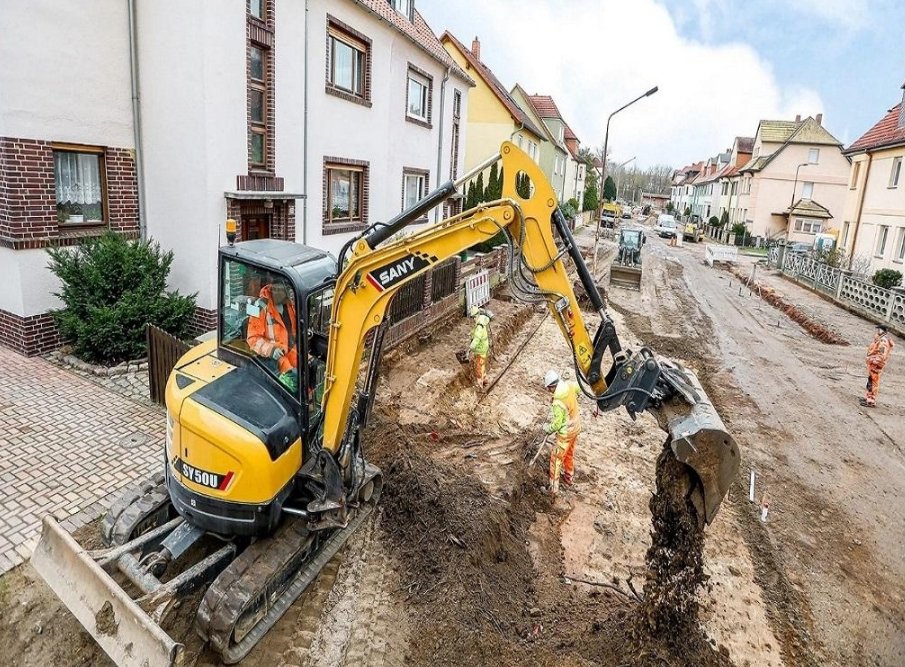Excavators are vital machinery on construction sites, and their effectiveness relies on regular maintenance. A neglected excavator may result in costly repairs, unanticipated downtime, and safety hazards for operators. A planned maintenance checklist guarantees that equipment is dependable, has a longer service life, and runs smoothly during project operations. Every inspection step is important, from daily checks to regular preventative maintenance chores. Construction teams that include excavator maintenance in their workflow may decrease downtime and increase productivity. This paper covers essential areas to check and provides practical recommendations to assist owners and operators in maintaining excavators effectively while avoiding costly repairs and delays.
Why Is Excavator Maintenance Important?
Excavator maintenance significantly affects safety, efficiency, and long-term savings. Without regular maintenance, machines might develop hydraulic leaks, undercarriage damage, or engine failure. Each failure causes project delays, higher repair costs, and lower business margins. Regular inspections save fuel usage by keeping systems clean and tuned. Operators also profit because well-repaired equipment reacts smoothly, enhancing control and lowering danger on-site. Preventive maintenance also maintains the high investment value of excavators, allowing them to endure longer and maintain their resale value. Scheduled maintenance is not only a recommended practice for contractors, but it is also an essential step in keeping construction projects going smoothly and safely.
What Should Be Checked Daily on an Excavator?
Fluid Levels and Leaks
Operators should start each shift by checking the engine oil, coolant, hydraulic fluid, and fuel levels. These fluids are essential to the excavator’s operation, and even modest shortages can result in overheating or performance loss. Inspect the machine for leaks under the engine, hoses, and hydraulic cylinders. Fresh traces of oil or coolant on the ground indicate problems that require attention. Tightening fittings and reporting problems early saves major failures later. Keeping fluids topped up guarantees smooth functioning and minimizes wear on components. Daily checkups take only a few minutes, yet they provide critical protection against costly malfunctions and missed work hours.
Undercarriage and Tracks
The undercarriage bears the whole weight of the machine and must be thoroughly inspected on an ongoing basis. Operators should stroll around the excavator to look for worn or loose track shoes, missing bolts, and broken rollers. Dirt, pebbles, and debris frequently become lodged in the undercarriage and must be removed to prevent accelerated wear. Track tension must also be correct; too tight adds strain, while too loose diminishes stability. A well-maintained undercarriage increases mobility, fuel economy, and jobsite safety. Addressing track wear early not only enhances service life but also saves money on replacements, allowing the excavator to continue performing heavy-duty activities uninterrupted. For continued, highly efficient operation, attention must also be paid to crucial drivetrain components like Bobcat final e35 drive.
Attachments and Hydraulic System
Attachments such as buckets, breakers, and grapples are subjected to continual stress and must be examined every day. Check for broken welds, bent edges, or worn teeth, which might reduce performance. Examine hydraulic hoses, couplings, and cylinders for leaks or damage. Look for evidence of abrasion or swelling on hoses, since they might predict future problems. Ensure that quick couplers are tightly locked to avoid disconnection while operating. Properly working attachments increase production, while a powerful hydraulic system provides a steady force. A brief daily check of these components maintains operational efficiency and protects both the machine and the operator’s safety.

Excavator Preventive Maintenance Checklist
Weekly and Monthly Inspections
Excavators require weekly and monthly inspections in addition to daily tests to ensure their reliability. Operators should inspect filters, fan belts, and grease fittings on a weekly basis to prevent wear. Monthly inspections should involve checking the battery status, examining the boom and stick pins, and validating hydraulic pressure levels. These inspections frequently discover minor faults before they escalate into major breakdowns. Keeping a journal of maintenance operations guarantees that nothing is overlooked and allows you to schedule part replacements ahead of time. By combining daily maintenance with organized weekly and monthly evaluations, construction teams may establish a stronger preventative routine, decreasing downtime and ensuring excavators run consistently under big loads.
Engine and Electrical Components
The excavator engine powers every operation, so regular inspection is critical. Air filters should be cleaned or changed to avoid dust buildup, which affects efficiency. Fuel filters must also be checked to prevent obstructions that cause engine stalling. Electrical systems, including wires and connections, should be checked for fraying, corrosion, and loose contacts. Test all lights, gauges, and warning lights to ensure they work correctly. Batteries require cleaning and safe connections to provide consistent power. A powerful engine and a dependable electrical system keep the excavator working smoothly, assuring productivity on the construction site without unexpected disruptions or expensive repairs.
Cleaning and Lubrication Tasks
Cleaning and lubricating are easy procedures that help excavators avoid long-term harm. Removing dirt, mud, and debris from the machine avoids accumulation, which wears down components, particularly the undercarriage. Lubrication of pins, bushings, and moving joints is crucial for reducing friction and increasing part life. Neglecting grease spots typically results in early wear and expensive replacements. Regular cleaning also assists workers in detecting concealed fractures, leaks, or loose pieces during inspections. A clean, well-lubricated excavator not only looks professional, but it also performs more effectively. These everyday actions, albeit tiny, are an important aspect of preventative maintenance and should never be overlooked.
Conclusion
Excavator maintenance is more than just regular; it represents a dedication to safety, efficiency, and cost reduction. Daily inspections protect against unexpected failures, while weekly and monthly checkups ensure that systems operate at optimal performance. Addressing fluids, undercarriage, attachments, and hydraulics assures dependable operation. Preventive maintenance for the engine, electrical system, and lubricant reduces downtime and increases production. Every operation, from cleaning to topping fluids, helps to extend the machine’s life and retain its worth. Following a standardized checklist helps construction teams create trust, decrease operational expenses, and keep projects on track. Consistent maintenance ensures that excavators remain valuable assets on every assignment.







